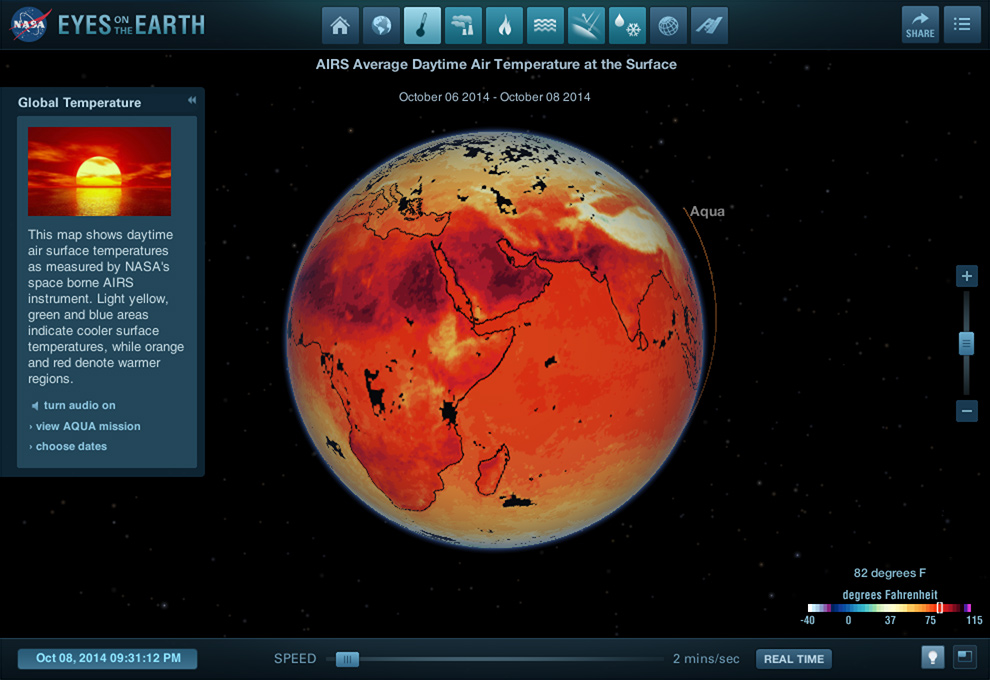Interactive: Eyes on the Earth

October 8, 2014
| Language |
|
|---|
Track Earth's vital signs and fly along with NASA's Earth-observing satellites. See natural hazards from space, view near real-time science data and keep an Eye on our planet's heath with this stunning 3D visualization.
